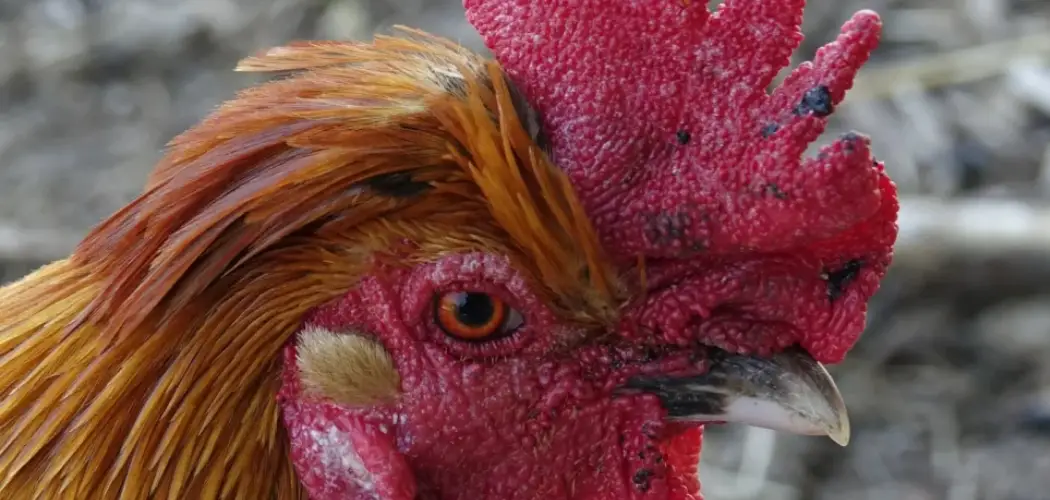Preventing frostbite on chicken combs is a vital aspect of winter care for backyard poultry enthusiasts. As temperatures plummet, chickens are susceptible to frostbite, particularly on their combs and wattles, which are highly exposed and prone to freezing. Understanding the causes and preventative measures is essential for safeguarding the health and well-being of your flock.
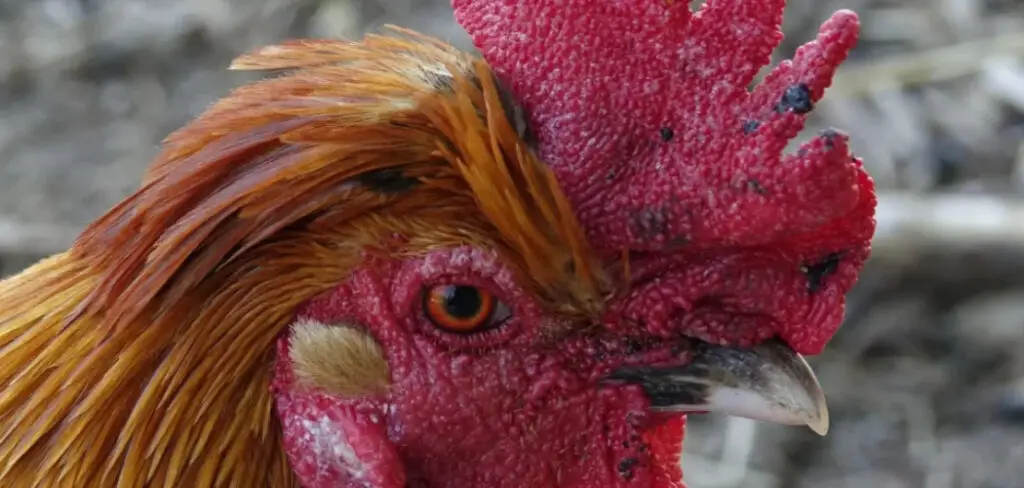
In this comprehensive guide, we’ll explore the various strategies and techniques for how to prevent frostbite on chicken combs. From insulating the coop and providing ample ventilation to utilizing remedies such as petroleum jelly and specialized chicken combs protectors, there are numerous steps you can take to minimize the risk of frostbite.
By equipping yourself with knowledge and implementing proactive measures, you can ensure that your chickens stay comfortable, healthy, and thriving even in the harshest of winter conditions.
Importance of Protecting Chicken Combs from Frostbite
Protecting chicken combs from frostbite is paramount for several reasons. Frostbite not only causes discomfort and pain to the affected chickens but can also lead to more severe health complications. The combs and wattles serve as regulatory organs for body temperature, and damage to these areas can impair a chicken’s ability to thermoregulate.
Furthermore, chickens with severe frostbite may suffer from infections or, in extreme cases, require amputation of the damaged tissue. This can significantly impact their overall health, reduce their laying performance, and potentially lead to a decrease in the flock’s productivity.
Additionally, chickens that are stressed or in pain from frostbite may display altered behavior, which can affect the social dynamics within the coop. Therefore, taking steps to prevent frostbite is not just about maintaining the physical appearance of your chickens but ensuring their health, happiness, and productivity throughout the winter season.
Additionally, preventing frostbite can save you time, money, and resources in treating potential complications or replacing affected chickens.
Understanding Frostbite in Chicken Combs
Frostbite in chickens occurs when their skin and underlying tissues freeze due to exposure to cold temperatures, particularly when combined with moisture—either from humidity in the air or direct contact with snow and ice. Chicken combs are especially vulnerable owing to their exposed and vascular nature, which, while beneficial for dissipating heat in warm weather, poses a significant risk in colder climates.
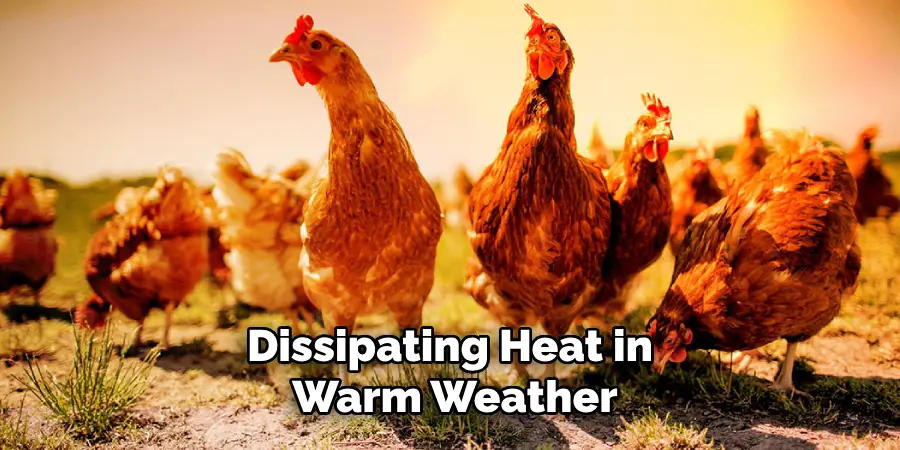
Frostbite typically affects the tips of the comb first, manifesting as discoloration—turning from bright red to a pale, waxy, or even black hue—followed by swelling, and in severe cases, tissue necrosis.
The severity of frostbite can vary greatly, categorized into mild, moderate, and severe stages, each with distinct symptoms and implications for the chicken’s health. Initial frostbite signs may not be immediately apparent, as the damage develops internally before visible symptoms manifest. Understanding the progression of frostbite is crucial in implementing timely interventions to mitigate further harm, promoting recovery, and preventing the condition from escalating to a more severe state.
Early detection and treatment can significantly improve outcomes for affected chickens, underscoring the importance of regular observation and care, especially during the colder months.
Anatomy of Chicken Combs and Susceptibility to Frostbite
The comb of a chicken is not just a distinctive and visually striking feature; it plays a critical role in the bird’s thermoregulation and overall health. Structurally, a chicken’s comb is made up of a soft, fleshy tissue that sits atop their head, varying in size, shape, and color among different breeds.
This variability can influence a chicken’s susceptibility to frostbite, with larger, more protrusive combs, such as those seen in single comb varieties, being particularly at risk in freezing temperatures.
The comb’s primary function is to aid in heat dissipation, acting as a radiator through which blood is circulated to release excess body heat.
This is highly efficient in warm weather but becomes a liability in cold, windy, or wet conditions, where the comb’s exposed blood vessels can quickly lose heat and freeze. The larger surface area and thinner skin of the comb and wattles mean that these structures can cool down faster than the rest of the body, making them the first to be affected by frostbite.
Breeds with smaller or more compact comb types, such as the pea or rose comb, are naturally less prone to frostbite due to their reduced surface area and better protection from the elements.
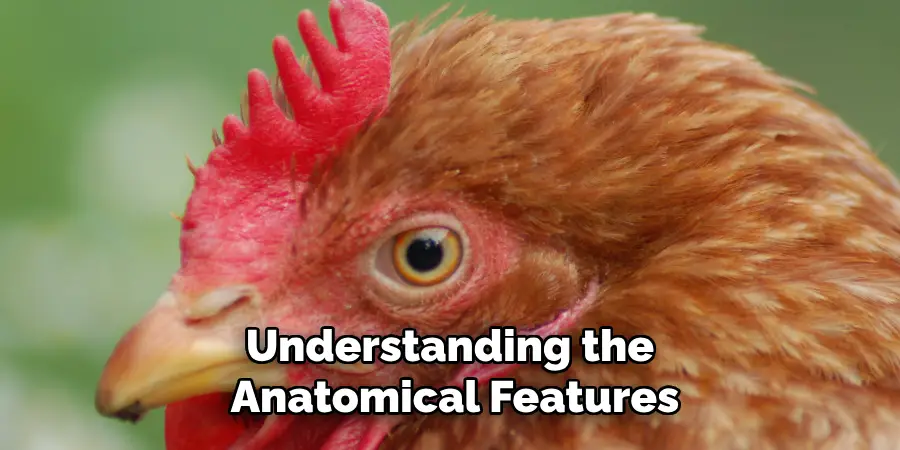
Understanding the anatomical features and susceptibilities of chicken combs is crucial for selecting breeds suited to your climate and for implementing targeted measures to protect them from the ravages of cold weather.
Assessing Frostbite Risk Factors
Assessing frostbite risk factors is essential for preventing frostbite in chickens during the colder months. Several factors increase the risk of frostbite, including temperature, humidity, ventilation, and breed susceptibility. Extreme cold is not the sole determinant; how chickens are housed and cared for plays a significant role in their vulnerability to frostbite.
Firstly, temperatures that dip below freezing can pose a direct threat, but the risk escalates with the addition of wind chill, which can significantly lower the threshold for frostbite occurrence. Humidity levels also contribute to the risk; damp conditions combined with cold air can increase the likelihood of frostbite since wet skin freezes faster than dry. Poor ventilation in the coop can lead to a buildup of moisture from breathing and waste, exacerbating this issue.
Another critical factor to consider is the breed of chicken. As mentioned, chickens with larger, more exposed combs, such as those with single combs, are at a higher risk of frostbite compared to breeds with smaller, more protected combs, like the pea or rose comb varieties.
The genetic predisposition of certain breeds means that owners need to be extra vigilant and possibly implement more rigorous protective measures.
Finally, the overall health and age of the chicken can influence their susceptibility to frostbite. Chickens that are stressed, have compromised immune systems, or are very young or old, may lack the physiological resilience to withstand harsh conditions, making them more prone to frostbite.
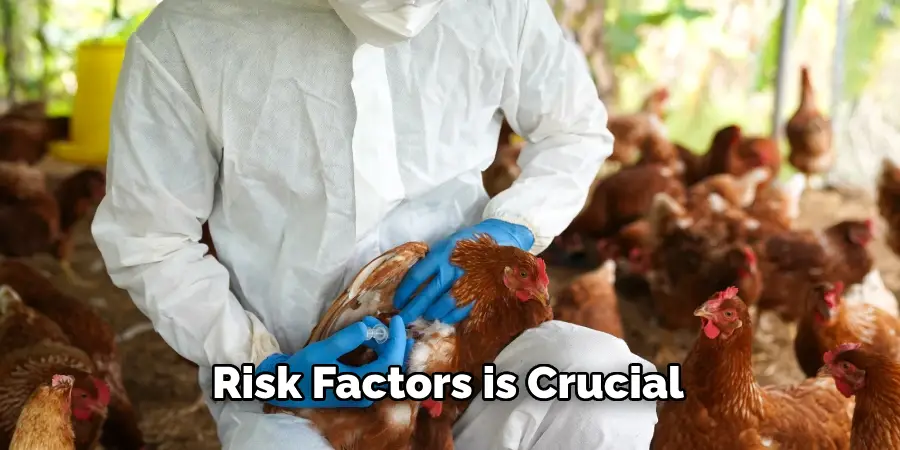
Understanding these risk factors is crucial for implementing effective prevention strategies. By assessing the specific risks your flock may face, you can tailor your approach to provide the best protection against frostbite, ensuring your chickens remain healthy and comfortable throughout the winter season.
Identifying Chicken Breeds Prone to Frostbite
When considering the resilience of chicken breeds to frostbite, it becomes apparent that anatomy plays a pivotal role in determining their vulnerability. Breeds with large, prominent combs and wattles are at a higher risk due to the increased surface area exposed to cold temperatures.
Examples of such breeds include the Leghorn, known for its large, single comb, and the Minorca, which also sports a sizeable single comb that stands upright, making these breeds especially susceptible to frostbite during cold weather.
Conversely, breeds with smaller or more compact combs, such as the pea or rose combs, exhibit a natural resilience to frostbite. Breeds like the Ameraucana, with its pea comb, and the Wyandotte, sporting a rose comb, are better suited to colder climates due to their anatomical features which offer natural protection from the elements.
These combs, characterized by their low profile against the head, minimize the risk of frostbite by reducing exposed skin area and retaining warmth more effectively.
Additionally, breeds that originate from colder regions often come with built-in cold resistance. The Russian Orloff, for instance, with its walnut comb, is known for its toughness in frosty conditions, showcasing how evolutionary traits have adapted these birds to their native climates.
It’s worth noting that while certain breeds are genetically predisposed to withstand colder temperatures better than others, proactive measures and proper care can significantly mitigate the risk of frostbite across all breeds. Identifying the breeds most at risk is the first step in crafting an effective winter care strategy to protect any flock from the harsh realities of cold weather. So, it’s essential to consider both breed and environmental factors when selecting chickens for your flock.
Evaluating Environmental Conditions
Evaluating the environmental conditions in which your chickens are kept is crucial for preventing frostbite and ensuring their overall well-being during cold weather. The coop’s location, construction, and management play a significant role in safeguarding the birds against the cold and damp conditions that can lead to frostbite.
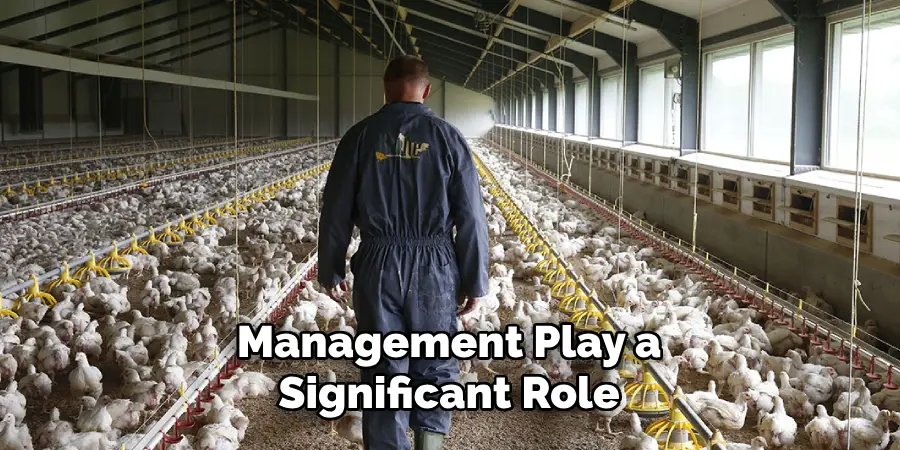
Ideally, a chicken coop should be situated in a spot that minimizes exposure to direct wind, which can dramatically increase the risk of frostbite by lowering the temperature around the chickens and their coop. The use of windbreaks, such as fencing, shrubbery, or strategically placed structures, can help reduce wind chill.
Additionally, the coop should be constructed with materials that provide adequate insulation without sacrificing ventilation. Insulation helps retain heat generated by the birds inside the coop, but without proper ventilation, moisture can accumulate, increasing the risk of frostbite.
The interior of the coop must be kept dry and clean because a damp environment can exacerbate the freezing point of exposed combs and wattles, leading to frostbite even in less extreme temperatures. Bedding materials should be checked regularly and changed as needed to ensure they remain dry and free from mold.
Lastly, monitoring and adjusting for weather changes plays an essential role in maintaining an environment conducive to chicken health. This includes providing additional heat sources during extreme cold spells, ensuring that water sources do not freeze, and possibly even altering the flock’s diet to increase their calorie intake, helping them generate more body heat.
By thoroughly assessing and adapting to the environmental conditions, poultry owners can create a safer, more comfortable winter habitat for their chickens, reducing the risk of frostbite and other cold-related issues.
Recognizing Signs of Cold Stress in Chickens
Identifying signs of cold stress in chickens is paramount for maintaining their health during cold weather. Early detection can prevent more severe issues, such as frostbite or hypothermia, from developing. Some common signs of cold stress include huddling or puffing up feathers to retain warmth.
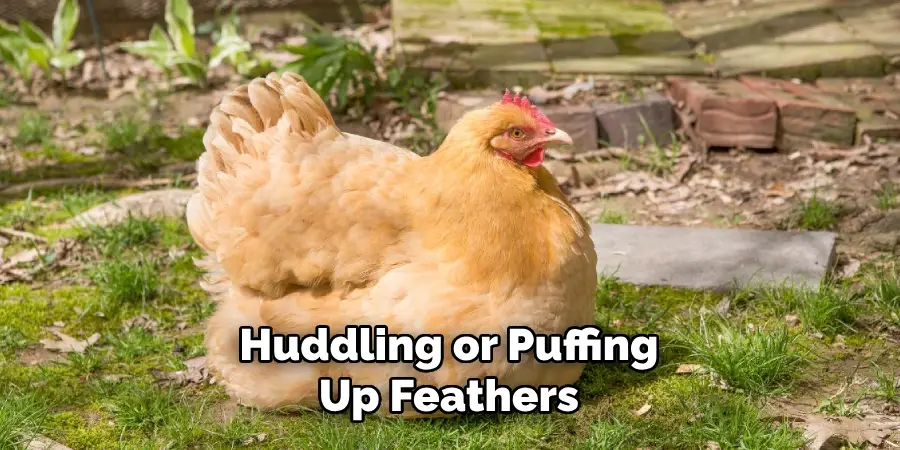
Chickens may also become less active and show a decreased interest in eating, which can lead to a reduction in egg production. Another sign to watch for is any change in their vocalizations, which might indicate discomfort or distress.
Visible shivering is a clear indication that a chicken is struggling to maintain its body temperature. Additionally, changes in comb and wattle appearance, such as discoloration or swelling, can be early signs of frostbite. It is also important to observe their legs and feet for any signs of abnormal color or lethargy, which can further indicate that the chicken is not coping well with the cold temperatures.
Prompt action upon noticing these signs can mitigate the effects of cold stress. Adjustments such as improving coop insulation, ensuring adequate food and water intake, and employing supplemental heat sources, when necessary, can help maintain a comfortable environment for the flock. Keeping a vigilant eye on the flock’s behavior and physical condition during winter can ensure that chickens remain healthy and productive throughout the colder months.
10 Methods How to Prevent Frostbite on Chicken Combs
1. Provide Adequate Ventilation in the Coop:
Proper ventilation is crucial for preventing frostbite on chicken combs. Good airflow helps regulate moisture levels in the coop, reducing the risk of condensation that can lead to frostbite. Ensure there are vents or windows that can be opened to allow fresh air to circulate while keeping drafts away from the chickens.
2. Insulate the Coop:
Insulating the chicken coop helps maintain a stable temperature inside, reducing the likelihood of extreme cold conditions that can cause frostbite.
Use insulation materials such as foam boards or straw bales to insulate the walls and ceiling of the coop. Pay special attention to sealing any gaps or cracks where cold air could seep in.
3. Provide Ample Bedding and Nesting Material:
Deep bedding provides insulation and helps keep the coop warmer during cold weather. Use materials like straw, hay, or wood shavings to create a thick layer of bedding on the coop floor. Additionally, provide plenty of nesting material in the nesting boxes to keep eggs and broody hens warm.
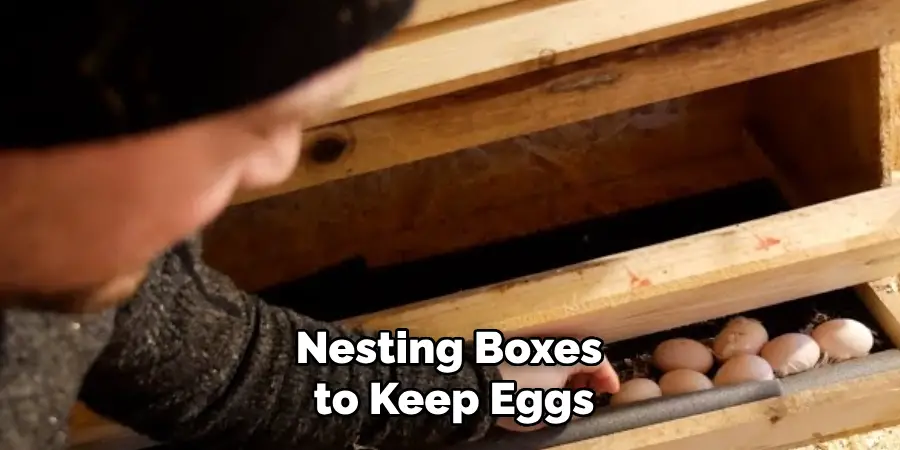
4. Offer Supplemental Heat Sources:
In extremely cold climates, providing supplemental heat sources can help prevent frostbite on chicken combs. Use heat lamps, radiant heaters, or heated pads designed for poultry to warm specific areas of the coop. Ensure that heat sources are installed safely, away from flammable materials and out of reach of curious chickens.
5. Install Frostbite Guards:
Frostbite guards, also known as coop curtains or windbreaks, can be installed around the perimeter of the coop to block cold drafts and protect chickens from exposure to harsh winds. These can be made from heavy-duty plastic or canvas and should be adjustable to allow for ventilation while providing protection from the elements.
6. Apply Moisture-Resistant Coating on Combs:
Applying a protective coating on chicken combs can help prevent frostbite by sealing moisture out and providing a barrier against cold temperatures. Use a moisture-resistant balm or ointment specifically formulated for poultry, and apply it to the combs regularly, especially before periods of extreme cold.
7. Use Deep Litter Method:
The deep litter method involves continually adding fresh bedding on top of existing bedding in the coop throughout the winter months. This creates a deep layer of insulation that helps retain heat and prevents moisture buildup. Regularly turning the bedding helps aerate it and reduce ammonia levels, promoting a healthier environment for the chickens.
8. Encourage Roosting Behavior:
Chickens naturally roost at night to keep themselves warm. Provide sturdy roosting bars or perches in the coop at varying heights to accommodate all the chickens. Make sure the roosts are wide enough for the chickens to comfortably grip with their feet and positioned away from drafty areas.
9. Limit Outdoor Exposure:
Minimize the amount of time chickens spend outside during cold weather to reduce the risk of frostbite. Encourage them to stay inside the coop by providing plenty of food, water, and entertainment, such as hanging treats or providing boredom busters. If chickens must go outside, ensure they have access to sheltered areas and provide extra bedding in outdoor shelters.
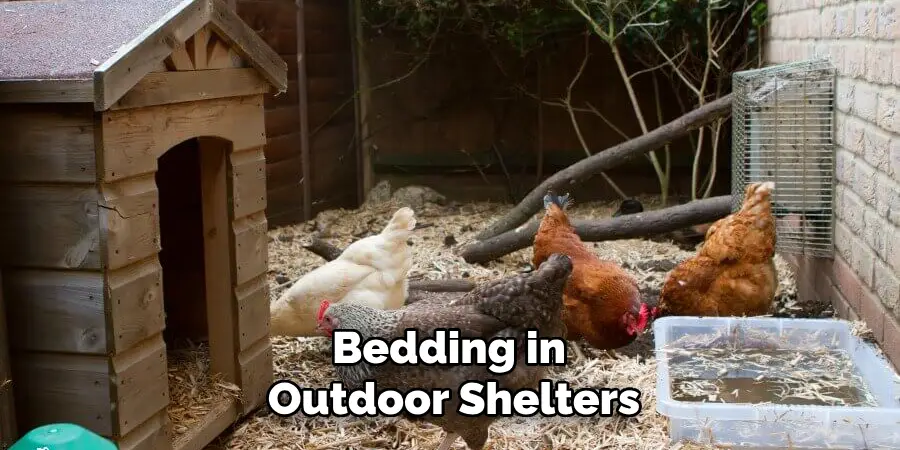
10. Monitor Coop Conditions Regularly:
Regularly monitor the temperature, humidity, and overall conditions inside the coop to ensure that chickens are comfortable and safe. Use a thermometer and hygrometer to track temperature and humidity levels, and make adjustments as needed to maintain optimal conditions for preventing frostbite.
Conclusion
In conclusion, preventing frostbite on chicken combs is not only a matter of ensuring the physical well-being of your flock but also an integral part of responsible poultry care. By implementing the preventative measures discussed, such as providing adequate ventilation, insulating the coop, and utilizing protective remedies, backyard chicken keepers can effectively shield their birds from the dangers of frostbite.
Moreover, staying vigilant and responsive to changes in weather conditions is paramount in maintaining the health and comfort of your chickens throughout the winter season. Thanks for reading, and we hope this has given you some inspiration on how to prevent frostbite on chicken combs!

